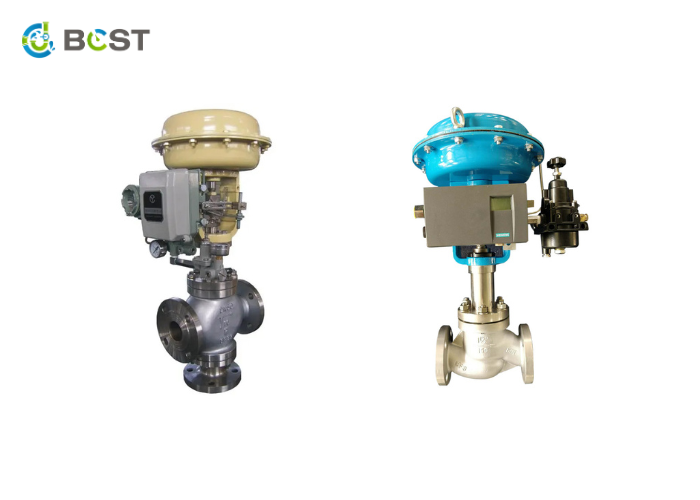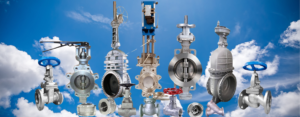
Valves are critical components that help control or regulate the flow of fluids by rhythmically closing, opening, or forming particle blockages in a variety of pathways. They are commonly used in industrial operations such as:
- Sewage and water processing
- Gas and petroleum
- Mining
- Plastic and chemical manufacturing
- Processing of oil
- Power generation, etc.
Valve seals are used by many engines to control valve lubrication and oil consumption. However, a valve cannot function properly without a valve seat.
The valve seat is the surface within a valve’s body that makes direct contact with the disk. It is the movable component of the valve that lets and restricts flow through it.
The valve seats in an engine must be compatible with the type of valves. These seats, like most cast iron heads, are induction-hardened and integrated for wear resistance.
What is the Role of Valve Seat?
Valve seats play two crucial roles, which are as follows:
- Airtightness Retention:When the valve is seated, the valve seat holds tightly, preventing combustion gas or compressed gas from leaking into the manifold between the valve seat and the valve.
- Heat Conduction:High-temperature combustion gas and heating discharge heat from the valve during operation. This is where valve seats play an important role in reducing cylinder head and valve friction at the same time.
Valve seats also serve the following purposes:
- Maintain the seal’s strength once the valve has been installed. In this case, the integrity and quality of valve seat rings are critical.
- Minimize wear resistance since the entire valve seat must withstand the pressure of high loads and high heat.
Valve seats must have pleasing properties, such as seamless operation between the seat and the companion valve. It also helps keep work processes prolonged to ensure the operation is maintained at a reasonable cost.

Why Valve Fail?
Valves can help assure correct operation and safety, but they are fragile devices that can fail.
Several variables contribute to valve failure, and they are as follows:
- Debris within the pipeline
- Operating perpetually in excessively high-temperature conditions
- Worn seat seals and elastomers
- Inappropriate installation, maintenance, and assembly of the valve.
So, what are the symptoms of a malfunctioning valve? The warning signs that a malfunctioning valve emits are one of the earliest signs. As the situation worsens, failing valves will begin to vibrate and may lose some internal pieces.
Significant component corrosion and wear, as well as reverse flow, are other signs of a malfunctioning valve.
A valve on the verge of failing may also make some noises. When the disc slams against the valve seat, a condition known as ‘water hammer’ occurs.
As pipelines rupture, water hammers can cause significant damage. The best method to address this issue is to install a faster-closing valve. The check valve effectively prevents pressure surges.
Another notable symptom of a failing valve is when it starts sticking and leaking as it breaks down. Sticking is a condition that happens when valves become caught in one position. The entrance of debris into the disc and body bore causes it. Leaks are caused by a broken disk or seat, as well as impurities in the pipeline.
What are the Top Reasons Why Valve Fails?
- Faulty Seat Design:The valve seat is the most important component of most valves. The valve will not function if the valve seat is faulty. A defective seat design can lead to a limited life span, little leakage, and catastrophic failure. Depending on the context and media, this can have life-threatening and explosive consequences.
- Inferior Soft Seat Carrier Design: Many valves utilize soft seats with outer metallic seat carriers and valve seat inserts molded or pressed into them. This design offers various advantages. However, improper design can result in valve failure.
- Substandard Material Choice:Valve seats are made from a range of polymeric materials. The improper material for making valve seats can lead to unexpected failure.
This is due to the fact that diverse operating conditions and applications necessitate the use of different valve seat materials. This is why it is critical to investigate the physical qualities of all available plastic materials before deciding on the type that is best suited for a given operation.
- Excessive Torque/Friction:Friction between the ball and the seats affects the torque required to turn the ball valve. Minimal seal force – within a ball valve – is required to prevent leakage.
However, excessive circumferential seal force can cause rapid wear. It may also result in a rise in torque needs. When the temperature rises, the pressure between the ball and the seat rises as well, resulting in more friction.
In extreme circumstances, the valve may become locked in place, meaning it cannot be opened or closed. This causes the seat to fail mechanically as it is ripped apart within the valve. Once again, selecting a suitable material is critical.
- Cold Flow:One of the most frequently used materials for valve seats is polytetrafluoroethylene (PTFE). This substance is inert to nearly all known chemicals, has excellent sealing qualities, and may be used at a variety of temperatures.
Nonetheless, PTFE has a significant disadvantage: it is resistant to cold flow. The cold flow of the seat material during use and cycling can cause a gradual decrease in valve performance. This can result in catastrophic valve failure.
This is why it is critical to select a filled grade PTFE that is less susceptible to cold flow for seat design.

What Is the Importance of Maintenance and Valve Check?
- Prevent Costly Repairs:Regular maintenance and valve checks can identify potential issues early, allowing for timely repairs or adjustments. Addressing problems at this stage is usually less expensive than dealing with major engine damage caused by neglected valve seats.
- Optimize Engine Performance:Properly functioning valves and valve seats are essential for optimal engine performance. Maintaining them ensures the engine runs efficiently, achieving better fuel economy and power output.
- Extend Engine Life: Valve seat damage can lead to severe engine damage if left unchecked. Routine maintenance can extend the overall lifespan of the engine, reducing the need for premature replacements.
- Enhance Safety:A well-maintained engine is less likely to fail unexpectedly, reducing the risk of accidents or breakdowns, especially in critical situations like driving on highways or operating heavy machinery.
- Compliance and Emissions:Compliance with emissions standards is mandatory in many regions. Properly maintained valves and seats contribute to cleaner combustion, helping the engine meet emissions requirements.
In summary, maintenance and valve checks are essential for preserving the efficiency, longevity, and safety of internal combustion engines, ultimately saving you money and reducing environmental impact.
Conclusion
It is impossible to overestimate the importance of well-designed, high-quality valve seats. When valve seats fail or become compromised, the consequences can be grossly inefficient and financially costly. Valve seat maintenance should be emphasized more. It not only safeguards your engine’s efficiency and longevity but also prevents the significant financial setbacks and operational disruptions that result from neglected valve seat issues. It’s a proactive investment in the continued smooth operation, ensuring it remains a reliable and cost-effective asset for years.






